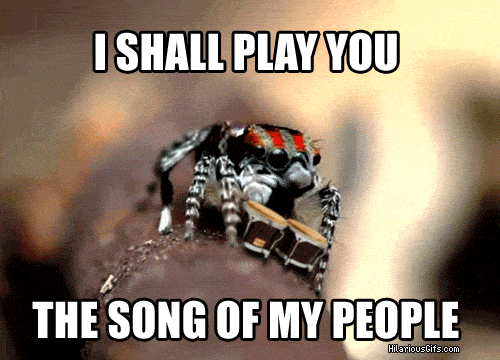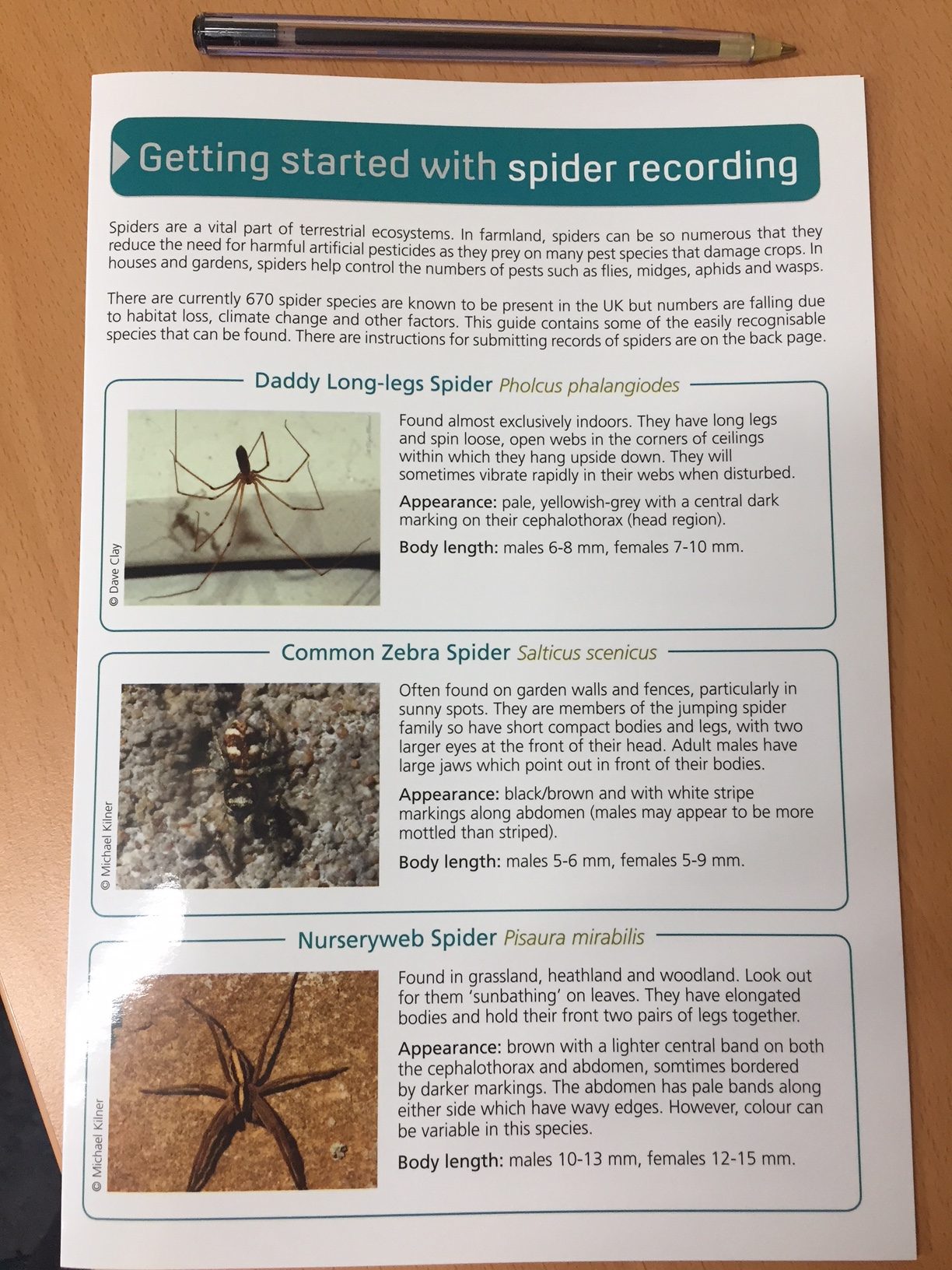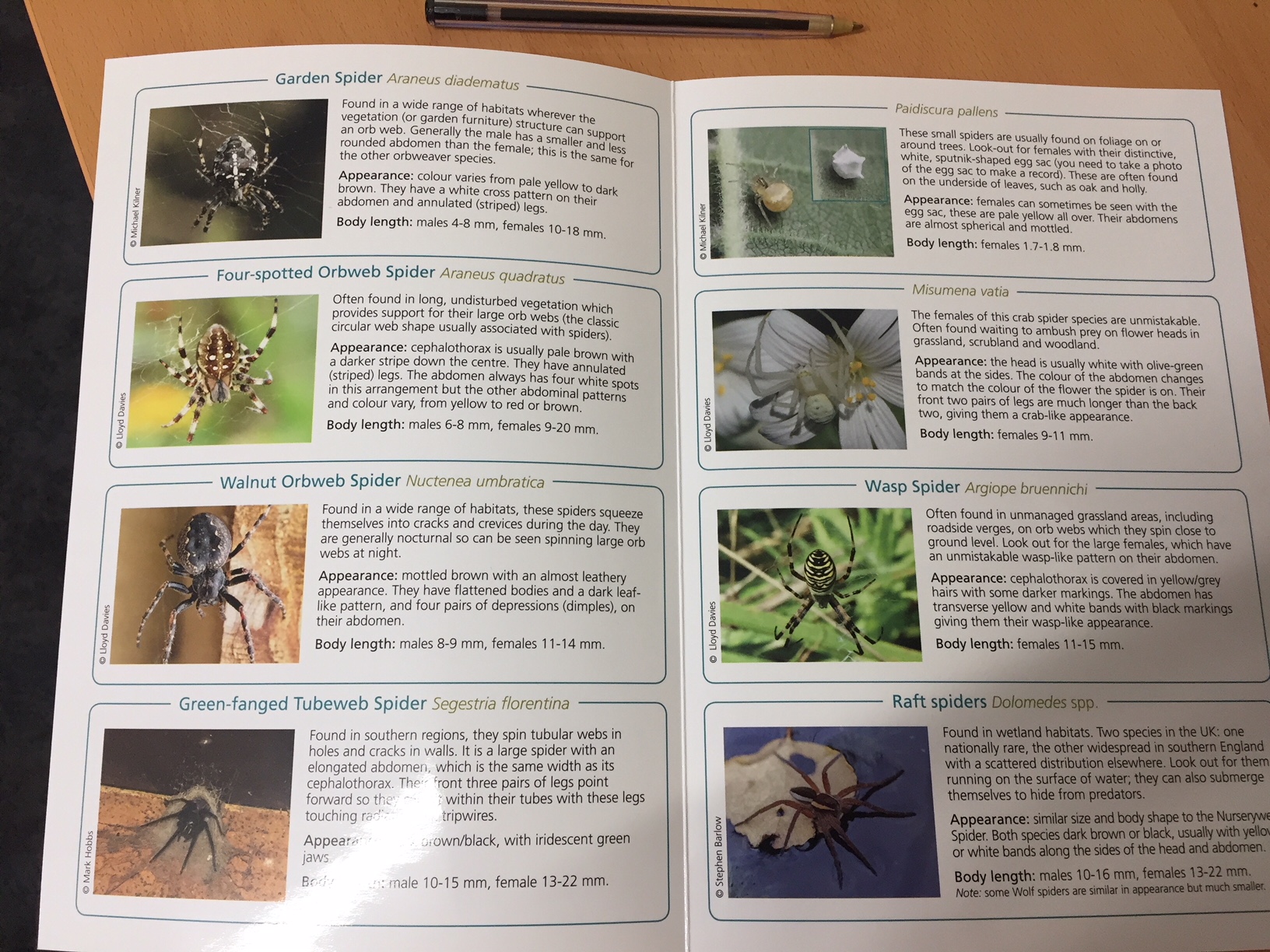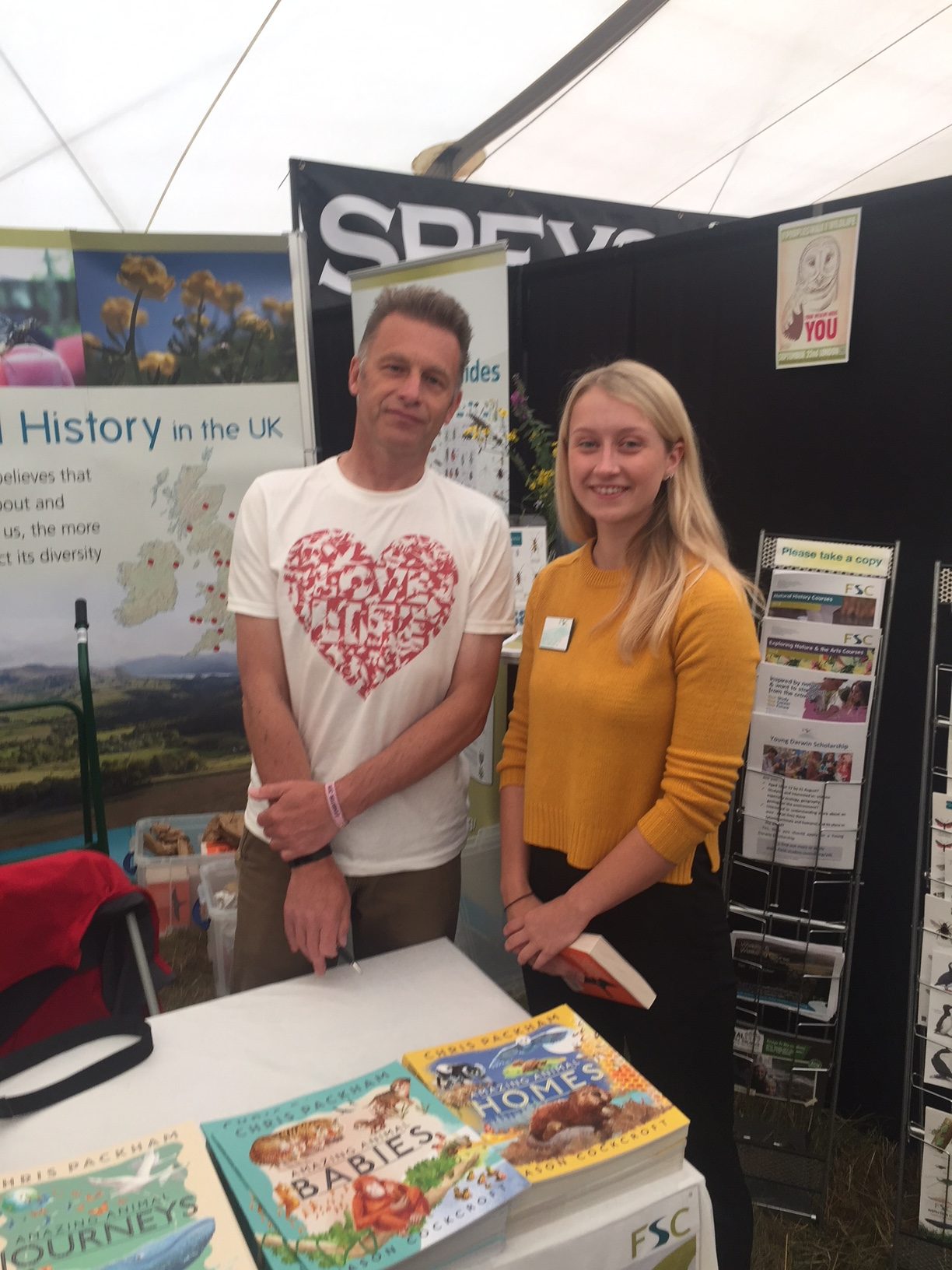
Spice Girls- Spice Up Your Life, has been stuck in my head all morning (which is a great way to start the week), hence this blog title, but I have actually been spidering up many people’s lives this month.
A new, free spider guide
For the past few months I’ve been working on making a new spider guide for beginners in an effort to encourage more people to take an interest in and record spiders. I can always remember one of my lecturers from my Communication for Conservation module repeating this quote:
“In the end we will conserve only what we love; we will love only what we understand; and we will understand only what we are taught.” (Baba Dioum, 1968.)
Spiders are not only under-recorded but they are generally under-loved too. Many people attempt to squash or remove spiders whenever they see one in their homes so I wanted to create a guide that would help people understand why spiders are important, why they’re not dangerous and how to identify some easily recognisable species.
Why are spiders important?
Spiders provide us with free pest control. They prey on many insect pest species which can destroy our crops and they help control the numbers of household pests, like flies, wasps and aphids. In Britain alone, it has been estimated that spiders eat more than the weight of the human population in insects each year so they really are excellent natural pest control agents.
Myth-busting spider bites
Another reason why people don’t tend to like spiders is because they believe spiders are dangerous blood-thirsty killers, this is definitely not true. Spiders have jaws and can bite because they need to be able to subdue and eat their insect prey. However:
- Very few species of spider in the UK have large/strong enough jaws to penetrate human skin.
- Spiders don’t want to bite us, biting = getting squashed afterwards so they’d much rather run away to a safe, dark place where they can live in peace.
- If you are bitten, it feels like a pinprick and is no worse than a wasp or bee sting.
- Most scare stories in the media arise from a spider bite which has contracted a secondary bacterial infection from not keeping the wound clean, the same as what would happen if you were to touch a scratch or splinter with dirty fingers.
If you are bitten and develop any adverse reactions, it’s best to seek medical advice. Spiders will only bite if they feel threatened so, as with any living creature, treat them with respect.
The guide
Along with this information on why spiders are important and why you should not be scared of them, my guide also contains 12 easily recognisable spider species. These include species which are common in our homes and gardens, along with some of our most interesting species, like raft spiders which can run on water and a species of crab spider which comes in a range of colours so it can camouflage itself in foliage to ambush its prey.
The guide was finally printed and published this month so this is what it looks like:
I have and will be giving these guides away for free at courses and events to help spread the spider love! The British Arachnological Society will also be doing the same. I’ve already been giving my guides out and they’ve been put to good use on the FSC’s BioLinks spider identification courses and with various other groups I’m involved with. I was also lucky enough to attend Birdfair 2018 this month. I was working on the FSC stand promoting all of our courses and identification guides, along with my spider guide! I’ve given away over 100 copies of my guide already – so that’s at least 100 more people who now know how great spiders are.
Chris Packham has one of my spider guides!
I was lucky enough to meet Chris again at the Birdfair this year as he was doing a book signing on our FSC stand. He is a big fan of the FSC and has a copy of every FSC fold-out chart, so I thought I best give him a copy of my spider guide to make sure his collection was up to date.
In other news, the lovely people I work with from the FSC Biolinks team have already booked me in four a couple of dates next year to help teach some more spider identification courses for the Biolinks project, so my guide will definitely come in handy then too!
All in all, things are going well. Thanks once again to TCV, Esmee Fairbairn and the FSC for giving me this opportunity,
Holly




